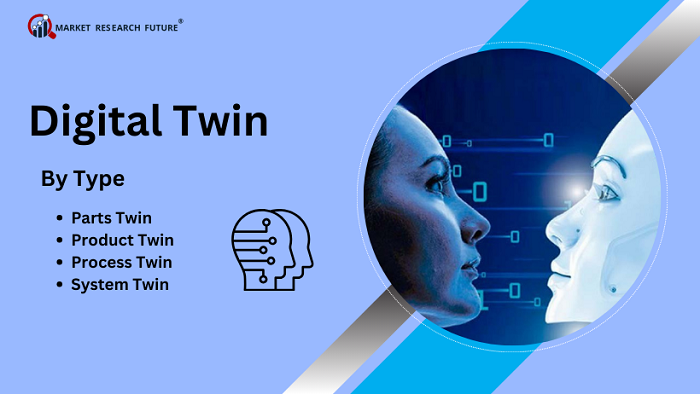Japan Digital Twin Market – Revolutionary Trends 2032

Digital Twin Technology: An In-Depth Analysis
The Japan Digital Twin Market has emerged as a significant force within the realm of Industry 4.0, integrating the physical and digital worlds through the use of advanced simulation, machine learning, and big data analytics. A digital twin is a virtual model designed to accurately reflect a physical object, process, or system, allowing for real-time monitoring, diagnostics, and prognostics. This technology enables businesses to enhance performance, optimize operations, and innovate new products with reduced costs and risks. The global digital twin market has witnessed rapid growth in recent years and is projected to continue expanding at a substantial rate.
Major Market Players
The digital twin market features several key players driving innovation and growth. Leading companies include General Electric, Siemens AG, IBM Corporation, Microsoft Corporation, and Dassault Systèmes. These corporations invest heavily in research and development to refine their digital twin solutions and integrate advanced technologies like artificial intelligence and the Internet of Things (IoT). General Electric's Predix platform, Siemens' MindSphere, and IBM's Watson IoT are notable examples of comprehensive digital twin platforms that offer robust, scalable solutions across various industries. Additionally, emerging players such as PTC and ANSYS are making significant contributions, pushing the boundaries of what digital twins can achieve.
[PDF Brochure] Request for Sample Report:
https://www.marketresearchfuture.com/sample_request/4504
Market Drivers
Several factors are propelling the growth of the digital twin market. The increasing adoption of IoT across industries is a primary driver, as digital twins rely heavily on the data generated by connected devices. This integration facilitates real-time data analysis and predictive maintenance, significantly enhancing operational efficiency. Furthermore, the rise of Industry 4.0 initiatives has accelerated the adoption of digital twins, as companies seek to digitalize their processes and embrace smart manufacturing.
The benefits of digital twins in terms of cost savings and improved efficiency are also compelling. By enabling virtual testing and simulation, businesses can avoid costly trial-and-error processes in the physical world. Additionally, digital twins enhance product lifecycle management by providing insights into performance and potential issues, allowing for proactive maintenance and extending the lifespan of assets.
Market Restraints
Despite its promising prospects, the digital twin market faces several challenges. High implementation costs remain a significant barrier, particularly for small and medium-sized enterprises (SMEs). The initial investment required for developing and deploying digital twin solutions can be substantial, encompassing software, hardware, and training expenses.
Data security and privacy concerns also pose a considerable restraint. Digital twins generate and rely on vast amounts of data, making them potential targets for cyber-attacks. Ensuring the security of sensitive information and maintaining privacy standards are critical challenges that need addressing to foster wider adoption.
Moreover, the complexity of integrating digital twin technology with existing systems can hinder implementation. Many companies operate with legacy systems that may not be readily compatible with advanced digital twin solutions, necessitating comprehensive system overhauls or complex integration processes.
Market Segmentation
The digital twin market is segmented based on application, end-use industry, and region.
Application-wise, digital twins are utilized across various domains, including product design and development, performance monitoring, predictive maintenance, and business optimization. The product design and development segment holds a significant market share, driven by the need for innovative and efficient product lifecycle management solutions.
End-use industries leveraging digital twins include manufacturing, healthcare, automotive, aerospace, energy and utilities, and others. The manufacturing sector dominates the market, with digital twins being pivotal in enhancing production efficiency, reducing downtime, and facilitating smart manufacturing practices. The healthcare sector is also witnessing a growing adoption of digital twins, particularly for patient monitoring and personalized treatment plans.
Regional Analysis
Geographically, the digital twin market is analyzed across North America, Europe, Asia-Pacific, and the Rest of the World.
North America holds a leading position in the market, primarily due to the early adoption of advanced technologies and the presence of major market players. The United States, in particular, is a hub for digital twin innovation, with significant investments in research and development.
Europe follows closely, with countries like Germany and the United Kingdom spearheading the adoption of digital twins in manufacturing and automotive industries. The region's strong focus on Industry 4.0 initiatives and smart manufacturing drives the demand for digital twin solutions.
Asia-Pacific is poised for rapid growth, driven by the expanding industrial sector in countries like China, Japan, and India. The region's increasing investment in IoT infrastructure and smart city projects further propels market expansion.
In the Rest of the World, regions like the Middle East and Africa are gradually embracing digital twin technology, primarily in the oil and gas sector, to optimize operations and enhance asset management.
The digital twin market stands at the forefront of technological innovation, offering transformative solutions across various industries. Despite challenges such as high implementation costs and data security concerns, the benefits of enhanced operational efficiency, cost savings, and improved product lifecycle management drive its growth. With continuous advancements and expanding applications, the digital twin market is set to revolutionize the way businesses operate, making it a pivotal component of the future digital landscape.
Browse Complete Report:
https://www.marketresearchfuture.com/reports/digital-twin-market-4504
- Questions and Answers
- Opinion
- Motivational and Inspiring Story
- Technology
- Live and Let live
- Focus
- Geopolitics
- Military-Arms/Equipment
- Sicurezza
- Economy
- Beasts of Nations
- Machine Tools-The “Mother Industry”
- Art
- Causes
- Crafts
- Dance
- Drinks
- Film/Movie
- Fitness
- Food
- Giochi
- Gardening
- Health
- Home
- Literature
- Music
- Networking
- Altre informazioni
- Party
- Religion
- Shopping
- Sports
- Theater
- Health and Wellness
- News
- Culture

